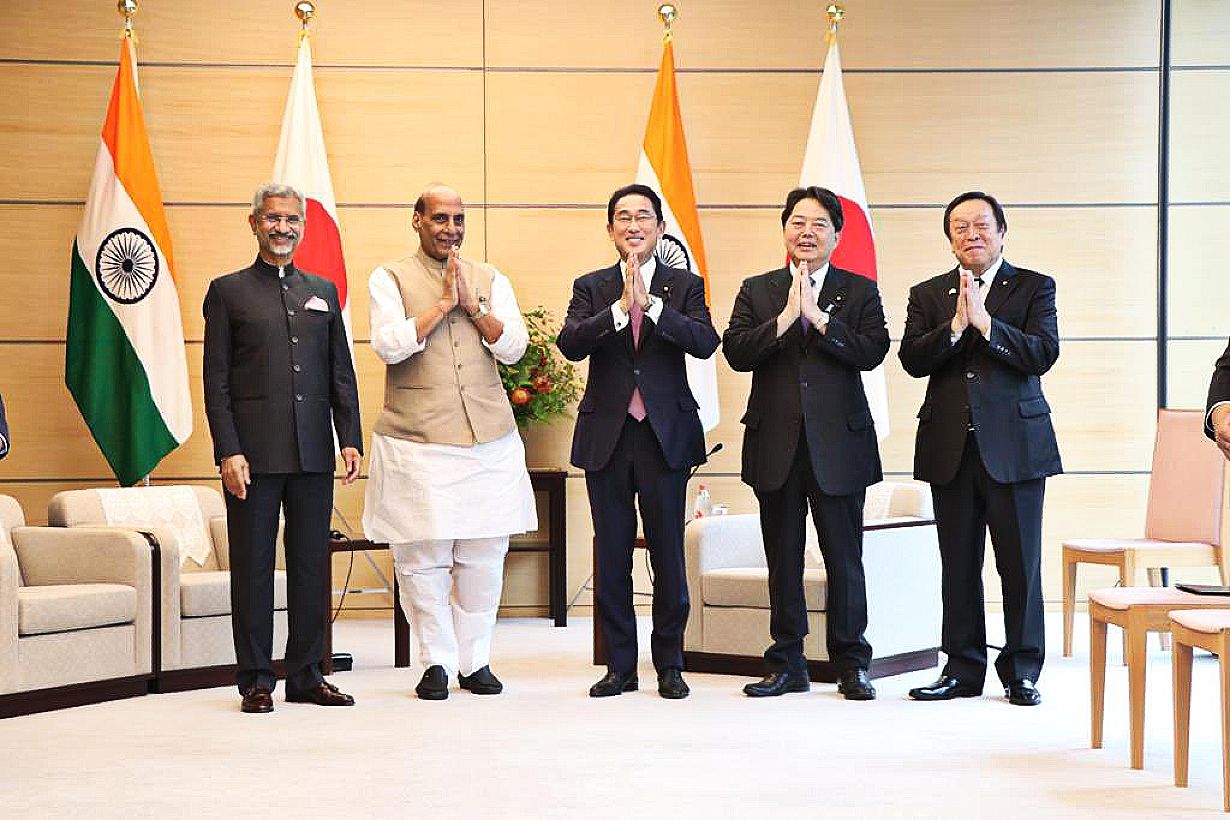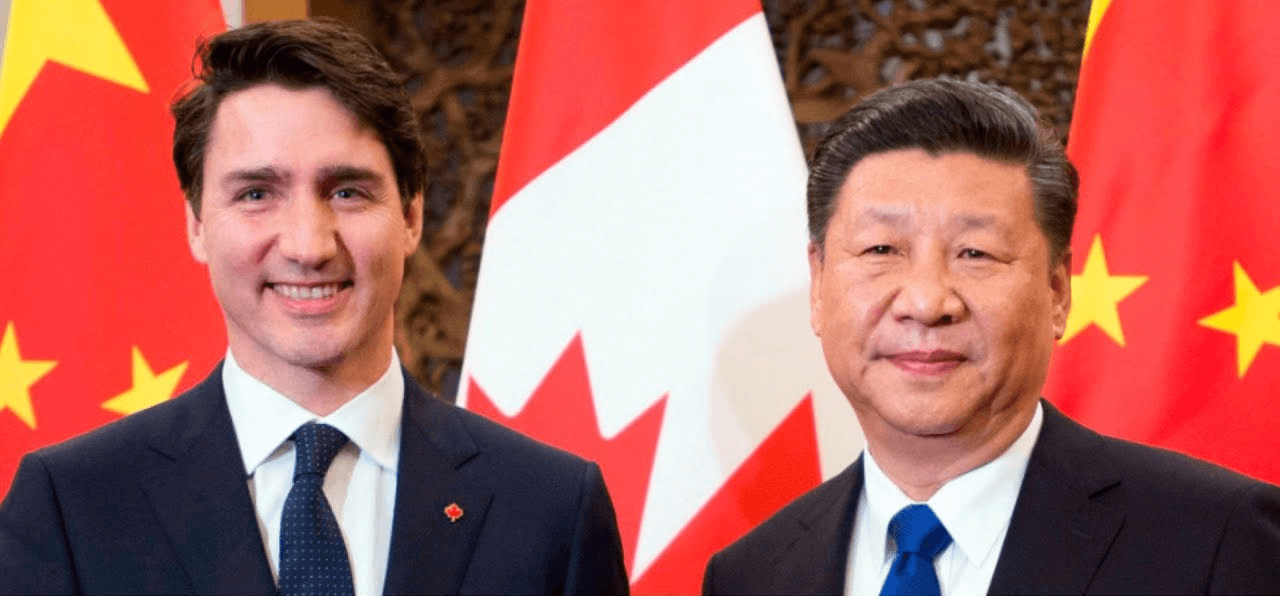EXPERT REVIEWS
By KN Pandita
December 26, 2022
For a long while, the world has been aware of the commercial importance of the Indo-Pacific region. Ships carrying merchandise from one part to another through the sea channels of the area carried their long voyages in an atmosphere of security and confidence.
However, the region’s endangered security and water channels became a concern for regional countries, especially when an authoritarian power threatened the right to free navigation.
This necessitated that democratic countries in general, and those with direct stakes in the Indian Ocean or the South Sea region, in particular, should think of collective action aimed at securing peace and normalcy in the Indo-Pacific region so that trade and commerce flowed unhindered.
This necessity resulted in the formation of Quad-4, meaning four major democracies of the region (India, Australia, and Japan) plus the United States of America with extensive stakes in the Indo-Pacific.
Although the Quad-4 started with a modest beginning, its programs were not finely defined — even debatable at one point in time – gradually, many cobwebs of confusion were cleared, and the importance of the alliance became an established reality.
Security
Quad-4 members meet annually, as per the schedule drawn by the secretariat, to deliberate on the current security situation in the concerned region (s).
Though the security of the region and its navigational channels are the primary concern of the alliance, the alliance is not opposed to cooperation among the member countries in other fields of development and economic stability.
The importance of Quad-4 comes into the limelight when we find China behaving in an aggressive and belligerent manner, particularly in the case of small island states. In the last two decades, China has emerged as a big economic power that has gained influence in the Asian and African continents.
It is also casting its authoritarian shadow on the South East Asian countries, particularly Japan and Australia.
Chinese Navy, called PLA Navy, has been roaming the Indian Ocean threateningly. Recently, a Chinese vessel anchored close to the Bay of Bengal for nearly a month, spying on the ships and their contents as they moved across the waters.
The security situation along the India-China border across the Himalayan line is way normal. From the India-China war of 1962 to the present, the entire Sino-Indian border extending to thousands of kilometers has remained hot and restive.
Only recently, skirmishes in the Tawang Arunachal border have taken place. This results from China’s expansionist policy, whether in India, Taiwan, Japan, or Australia. China wants to establish its dominance either through money or muscle power.
Japan and Australia, the two strong democracies, are situated in the southeastern neighborhood of China. They have been trying to trade and have normal relations with China for a long time. But the Chinese response has never been encouraging.
Response
Today we find two democratic countries, Japan and Canada, given open expressions of their disappointment with how China wants to treat them. Though Canada is not a member of the Quad-4 but its interests are closely linked with those of the other four democracies in the world.
Japan and Canada both have recently passed their annual budget. It is interesting to know the global perception of the two countries with particular reference to China.
First, we take up Japan. In an analysis, The Diplomat on December 17 wrote that Japan had marked a critical milestone in efforts to reshape its defense strategy, increase the national defense spending, and allow Tokyo to acquire a counterstrike missile capability.
On December 16, Japanese Prime Minister Kishida Fumio’s cabinet approved the nation’s three key security documents, which will mark a significant turning point in Japan’s post-war policy of maintaining an exclusively defense-oriented policy if realized.
Japan is in the process of returning to “a normal nation” in the long run by allowing the nation’s possession – and the possible use – of offensive capabilities to strike against enemy missile bases in the event of an armed attack on Tokyo.”
The paper wrote, “Tokyo is in the midst of the most severe and complex security environment since World War II,” pointing out the new National Security Strategy (NSS), positioned at the top of the three documents.
On December 16, the Japanese cabinet headed by Prime Minister Kishida passed three papers titled National Security Strategy (NSS), National, National Defense Strategy (NDS), and Defense Build Up Program (DBP).
In the preamble to NSS — which by far is the most important policy paper — it said, “under the vision of a Free and Open Indo-Pacific (FOIP), it is vitally important for Japan’s security to cooperate with allies and like-minded countries to ensure peace and stability in the region.”
Those countries mentioned in the NSS are the United States, Australia, India, the United Kingdom, France, Germany, Italy, Canada, New Zealand, South Korea, and Southeast Asian nations, among others.
 File Image: QUAD Nations Meet
File Image: QUAD Nations MeetThe DBP document will see Japan increase defense spending to 43 trillion yen ($314 billion) from the fiscal year 2023 to 2027. This is a 56.5% increase from the 27.47 trillion yen in the current five-year plan, which covers the fiscal year 2019 to 2023.
This will increase Japan’s defense spending to the NATO standard of 2% of the national GDP in 2027 − following Kishida’s instructions to his defense and finance ministers to do so in late November.
The biggest focus of the three security documents is how to deal with a rising China. How will Japan defend itself in the face of China’s rapid military rise? How much defense capability and defense budget will Japan need to confront China?
Those are the fundamental questions behind the documents, although never explicitly stated there.
The updated language of the NSS describes China as “the biggest strategic challenge” for Japan, while the 2013 version of the NSS only called China’s actions an “issue of concern to the international community.”
Canada
Let us now examine the Canadian perceptions of China as disclosed by discussing relations with China, the budget document of Canada states:
“The strategy calls for domestic measures to strengthen cybersecurity and protect against the theft of intellectual property, and, internationally, to work more closely with the Five Eyes, NATO, and international institutions to monitor and push back against Chinese assertiveness.”
Departing from the earlier approach — coexistence, cooperation, competition, and challenge — the new strategy claim that Ottawa will “compete with China when we ought and cooperate when we must.”
 File Image: Justin Trudeau and Xi Jinping
File Image: Justin Trudeau and Xi JinpingThe stark wording on China varies substantially from the engagement vocabulary of the past 50 years. Today’s China is labeled assertive and repressive, an “increasingly disruptive global power” that erodes the existing rules-based international order, threatening Canadian interests and values.
It builds on specific actions already taken, including the Huawei 5G ban, the rejection of Chinese investments in strategic minerals, the Uyghur genocide resolution in the House of Commons, public criticism of the National Security Law in Hong Kong, and the recent announcement of consultations about a possible Foreign Agent Registry.
Finally, the budgetary allocations passed by the Canadian lawmakers also show the seriousness of the state in providing grants that are needed to offset the provocation or belligerence of China.
A brief summation of the budget sanctions is as this: The big ticket items are C$750 million (US$549 million) for infrastructure projects filtered through a new US-led G7 arrangement, C$550 million (US$40.3 million) for an enhanced military presence, including a third frigate in the Indian Ocean and expanded participation in regional military exercises, and C$225 million (US$165 million) for strengthening public safety and cyber security at home and in Southeast.
Conclusion
In the final analysis, it is heartening to know that a serious realization is dawning on leading democracies of the world that the threats and challenges from autocratic and aggressive forces have to be faced and defeated collectively.
Each unit of the collective forum has to maximize its defense-offense capacity in all three land, air, and sea areas. However, the world expects China to understand its perceptions and rebuild its strategies that help preserve peace and improve life in developing countries.
Padma Shri KN Pandita is the former Director of the Centre of Central Asian Studies at Kashmir University. Views expressed here are of the author’s.
No comments:
Post a Comment